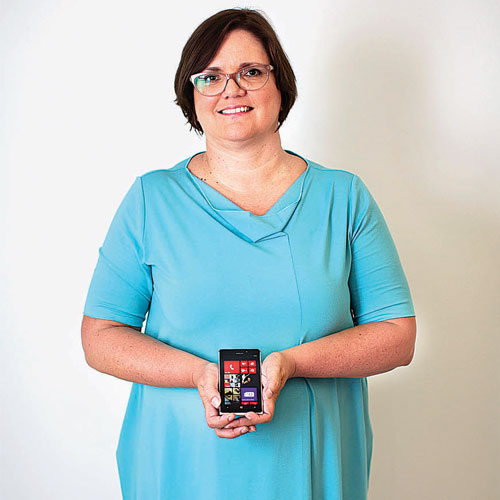Featured Products
Nokia executive, Jo Harlow, has revealed that Lytro-like computational photography is in the company’s plans for a future Lumia smartphone.
Nokia has been focusing on Microsoft’s Windows Phone for the past couple of years. The Finland-based company has struggled to attract customers, but that is mostly due to the still young operating system. However, things have started to go better with the introduction of the Lumia 920, the first smartphone in the world to feature built-in optical image stabilization.

Jo Harlow holding a Nokia Lumia 925, a Windows Phone 8 smartphone introduced on May 14. She said that the next step in smartphone imagery is the introduction of Lytro-like computational photography.
The 41-megapixel Nokia Lumia smartphone that never was
Since people are spending more time taking pictures, they are preferring to do it using a small, smart device which can also place phone calls and send emails. The emergence of the smartphone has shifted the consumer market like the PC did more than two decades ago.
Nokia was supposed to introduce a 41-megapixel Lumia device during an event in mid-April. The smartphone should have borrowed the PureView sensor found in the Symbian-powered Nokia 808. However, it seems like the Finland company has other plans for the future.
Nokia focuses on Lytro-like computational photography
Jo Harlow, Nokia Executive Vice President of Smart Devices, has revealed in an interview that the company is looking to add computational photography into its mobile phones.
Computational photography refers to the Lytro-like technology, which allows users to refocus their photos after taking them. The Lytro camera is a bit expensive, since its sensor is quite big.
However, Pelican Imaging has managed a breakthrough that has dramatically reduced its size. As a result, Nokia has decided to invest several million dollars in the company and has acknowledged that it is looking for ways to implement it into future products.
Refocusing technology opens the door to a broad range of possibilities
Harlow says that light field photography is very attractive to users, since they enjoy spending a lot of time editing images. This new technique would no longer require the users to take multiple photos, since they will have the ability to change the focus area at a later time.
Even if Windows Phone and the Lumia series are pretty powerful in other areas, Nokia has chosen to focus its last press events on the photography prowess of the smartphones. This has proven successful so far and light field photography is said to be “the next step” for the smartphone industry.
Nokia’s EVP added that technical limitations are no longer of any concern, since multi-core processors are now supported by small devices. She has hinted that the Pelican Imaging technology plays a major role in the company’s future plans, as the quality of an image captured with a smartphone is about to take a huge leap.






































